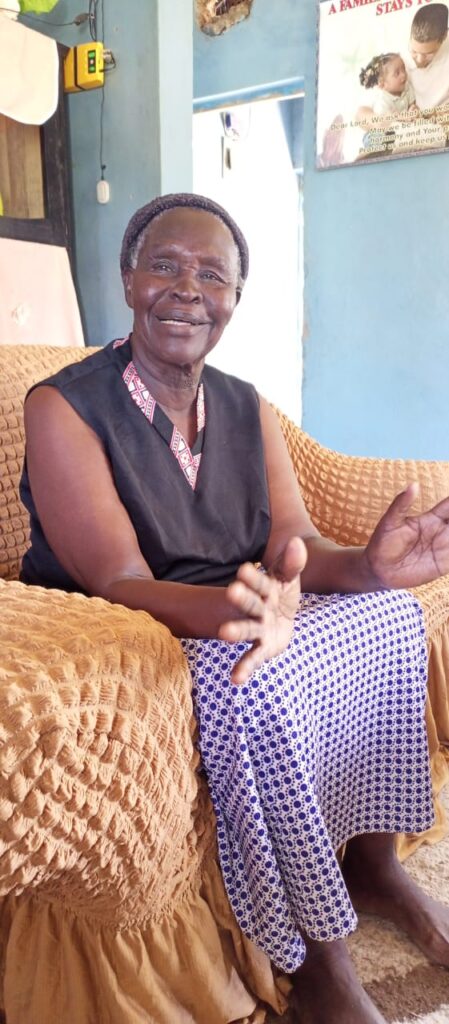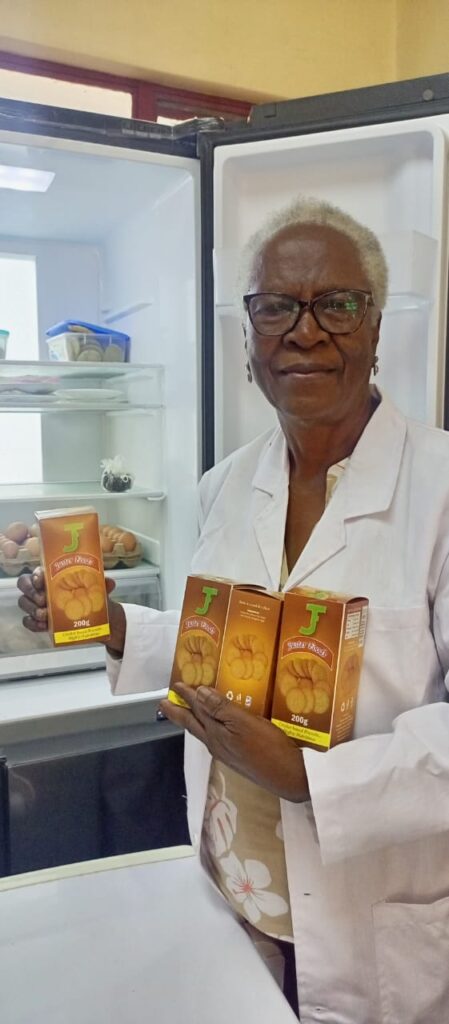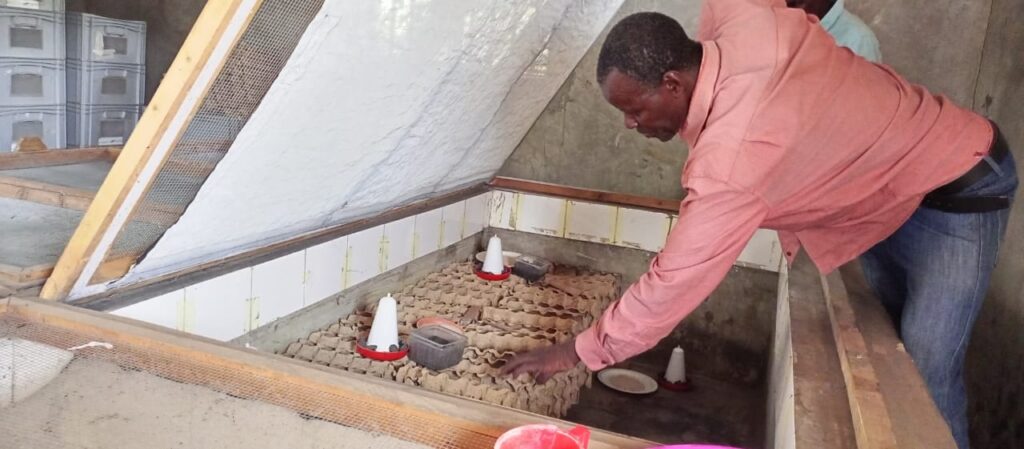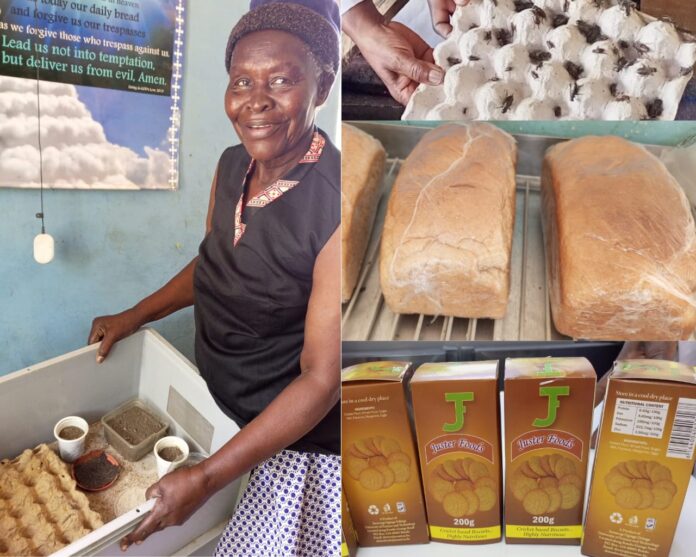Malnutrition, also known as hidden hunger, remains one of the major health challenges affecting the growth and development of children in the country.
World Health Organization (WHO) uses Anthropometry to determine the nutritional status of children.
Anthropometry the scientific study of the measurements and proportions of the human body, through looking at the proportion of weight and height of the child against their age.
Through this, a child can be declared to have stunted growth, underweight, overweight, or wasting.
According to Kenya Demographic Health Survey (KDHS) 2022, 18 per cent of children under the age of five are stunted, or too short for their age. The report says this is a sign of chronic undernutrition.
The report also indicate that five per cent of children under age five are wasted (too thin for
their height), which is a sign of acute undernutrition.
Also, the report indicates that three per cent of children under age five are overweight, which is a sign of overnutrition, and that ten percent of children are underweight, or too thin for their age.
The report indicate that stunting is higher among children in rural areas, at 20 per cent, than in urban areas at 12 per cent.
It further indicates that stunting decreases with increasing wealth, from 28 per cent in
the lowest quintile to nine per cent in the highest quintile.
The counties which reported highest percentages of stunted growth are; Kilifi (37 per cent), West Pokot (34 per cent), and Samburu (31 per cent).
Kisumu and Garissa Counties reported the lowest percentages of stunted growth at nine per cent.

What could be the secret in Kisumu?
Florence Gundo, 80, is a resident of Orongo village in Kisumu East.
For the past five years, she has seen transformation of lives of malnourished children.
Ms Gundo is the founder of Orongo Widows and Orphans Prayer Group.
Six years ago, Ms Gudo discovered nutrition in insects, and her life has never been the same again.
According to Ms Gudo, she had been struggling with bone complications which left her immobile.
“I could only walk through the help of crutches,” she said.
After long struggle, she once attended a nutrition workshop, in which she got ideas on how proper nutrition could facilitate her healing.
Traditionally many people consider insects as pests and not food, hence the biggest challenge is convincing them to eat the insects
Ms Gundo
According to Global Nutrition Report 2022, Kenya has shown limited progress towards achieving the diet-related non-communicable disease (NCD) targets.
The report indicates that 13.4 per cent of adult (aged 18 years and over) women and 3.6 per cent of adult men are living with obesity.
However, Kenya’s obesity prevalence is lower than the regional average of 20.8 per cent for women and 9.2 per cent for men.
And when Gundo discovered that her health complications were related to nutrition, she tried out cricket which had been one of the foods mentioned in the workshop to be good for nutrition.
And after a few trainings and engagements, she begun keeping cricket for domestic use.
At first, Gundo could fry and eat the insects as an accompaniment, but soon begun to add value, through processing them and using them to bake bread, and make porridge.
“Together with medication, I soon got my feet back on the ground, and I started preaching this to my neighbours,” she said.
She then identified four malnourished children in the neighbourshood, and enrolled them for her morning and evening porridge, and soon, their health status improved.
“When they went to hospital, the nurses were surprised at their improvement, and they too requested me to share the flour, which they begun recommending for other children,” she said.
She says the biggest challenge has been convincing people to embrace cricket.
“Traditionally many people consider insects as pests and not food, hence the biggest challenge is convincing them to eat the insects,” she says.
But with value addition, she says people are now slowly embracing cricket products.
Improved health
A few kilometres from Gundo’s home is 57-year-old Francis Ochieng.
Mr Ochieng discovered the nutritional benefits of crickets through Ms Gundo.
“I have a child suffering from sickle cell anaemia, and he had a poor eating habbit,” said Onyango.
And when he tried the porridge from Ms Gundo, he says the attacks on his child reduced.
This made him learn the art of keeping the insects so that he could be independent.
Cricket porridge has become the family breakfast, and we nolonger frequent the hospital with our kid
Mr Ochieng
“I attended a training organized by our church on how to manage cricket farming, and then I started mine,” he said.
“Cricket porridge has become the family breakfast, and we nolonger frequent the hospital with our kid,” he said.
“But caring for cricket requires huge commitment, as they need high standards of hygiene, regulated ventilation, and proper feeding,” he says.
His narrative is not different from Jenifer, not her real name.
Jennifer discovered her HIV status 15 years ago.
“When I was diagnosed, I was told my CD Count was 24, hence I could not be enrolled for ARV medication,” she says.
She was advised to work on her nutrition, so as to boost her CD Count.

It was then that she encountered the cricket porridge.
“I could get the cricket flour and make my own porridge. My three children were also malnourished, so we all got this as a relief,” she said.
Three months later, she went back to the hospital, and her CD Count had shot to over 200.
“I was then enrolled into ARV medication,” she said.
Her biggest challenge is the high cost of cricket products, with one kilo of cricket flour going for between Sh200 to Sh250.
“This is too much for us,” she says.
What experts say
According to experts, crickets are rich in Vitamin A, proteins, Calcium and Zinc, which are key nutritional components.
Professor Monica Ayieko is the Research Lead at the Africa Centre of Excellence in Sustainable Use of Insects for Foods and Feeds.
The centre is domiciled at Jaramogi Oginga Odinga University of Science and Technology (JOOUST), and funded through World Health Organization (WHO) to promote research on use of edible insects for foods and feeds.

According to Prof Ayiecko, 100 grams of cricket has more nutritional value compared to a kilo of beef.
“I would recommend cricket, instead of beef. There is a big difference between filling your tummy and nutrition.”
Prof Ayieko, a lecturer at the JOOUST’s Department of Food Security and Sustainable Agriculture has for over 30 years been researching on the nutrition value of edible insects.
She has conducted research in over 180 insects.
“We have termites, lake flies, beets, locusts, caterpillars, among others,” she said.
She says crickets are some of the most common insects adopted by many farmers in Western Kenya.
According to Prof Ayieko, her studies have revealed that nutrition from insects is far much better than most of the common foods we eat.
“The study involves crashing the insects and testing the nutrition value,” she said.
And of those studied, Prof Ayieko said the insects have recorded high value of Vitamin A, Proteins, Zinc and Iron.
“These are some of the nutritional elements which are very critical for humans,” she said.
And of all the insects studied, Prof Ayieko said no reports of major side effects have been recorded.
A few people have also reported little allergic reactions, such as itching of throat, and rushes, but we have an ongoing study on the sensitivity of the insects so as to find the true picture of this,
Prof Ayiecko
“Just a few cases of some people nauseated after eating some of the insects, but this is all psychological, especially when one has the visual expression of the insects,” she said.
She noted that some of the insects, like caterpillars also have high fat content, hence could be associated with the feeling of vomit.
“A few people have also reported little allergic reactions, such as itching of throat, and rushes, but we have an ongoing study on the sensitivity of the insects so as to find the true picture of this,” she added.
But with value addition, Prof Ayieko said the acceptability of the insects food has been high.
At JOOUST, she uses cricket to make biscuits.
But she says there is need for mass production so as to sustain the demand for industrialised value addition which can meet the market demand.
And to actualize this, the university is constructing a temperature controlled room for cricket production.
Prof Ayieko says due to Climate Change, fluctuating temperatures, as well as other weather conditions have been suspected to hinder the reproduction of crickets.
“In this room, we will have a constant temperature at 32 Degrees Celsius and have the other factors kept constant,” she said.
She adds; “If this proves to work, then we can recommend it for industrial production of crickets.”
She however says this can only be adopted by industries, as small scale farmers may not be in a position to afford the controlled-temperature room.
“Unless through innovations, the farmers come up with cheaper locally made material to achieve put up such a structure,” she adds.
She says the cases of malnutrition can be sorted if people embrace rearing and eating insects such as cricket.
How to produce crickets
Chirping sounds fill the air as we enter Mixa Farm compound in Nyamasaria, Kisumu County.
“Those are male crickets wooing their female counterparts for mating,” says Charles Odira.
To Mr Odira, the sounds are normal, as he has been exposed to them for the past seven years.
He is one of the farmers who have embraced insects farming in a bid to contribute to the widespread nutritional gaps in his community.
Crickets require small space, and little food compared to poultry, and they do not have so many complicated diseases
Charles Odira
Mr Odira developed interest in cricket farming in 2013, during a farmers’ engagement forum.
“When I was exhibiting some of the farm equipment I had fabricated, someone approached me if I would be interested to partner with him in rearing insects,” he said.
And after continuous engagement, and training, both in Kenya and Thailand, he set up an insects farm, abandoning poultry which he previously heavily ventured in.
“Crickets require small space, and little food compared to poultry, and they do not have so many complicated diseases,” he said.

Odira says farmers can pick wild crickets from the field, and put in special pens.
Others can also buy cricket eggs from those already breeding.
The eggs take 15 days to hatch, and the young crickets allowed to grow to maturity in the same pen.
They are fed on growers mash, black jack, sweet potato vines, and water in moist old blankets placed inside the pen.
“Cleaning the pen regularly, and the food containers reduces chances of mortality,” says Odira.
If not well attended to, he says ants, spiders and lizards may attack, and kill them.
A pen can carry between six to 10 kilos of cricket at maturity stage.
Odira says some of the challenges in the trade include slow acceptability of insects as food.
“Many people have not known crickets as food, so it is difficult to convince them to embrace it,” he says.
“But to deal with this, we are doing value addition, where we bake cricket bread, and cakes, and this is quite acceptable compared to eating a whole cricket.”
Crickets taking between two to three months, with a pen can produce between six to ten kilos of dry crickets upon harvesting.
Odira limits sale of crickets, and instead does value addition, mostly through baking cricket bread.
He sells a 400 grams of cricket bread at Sh60.
“Most of my clients are locals,” he said.
He sells cricket eggs at Sh500 per container carrying about 4, 000 eggs to other farmers as well.


